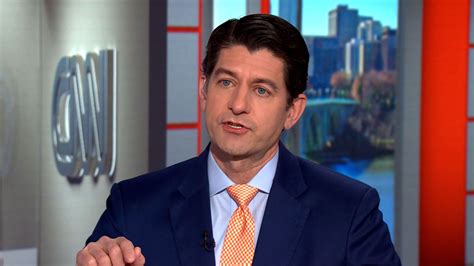The complex and multifaceted figure of Paul Ryan, the 54th Speaker of the United States House of Representatives. To understand Ryan’s impact and legacy, it’s essential to delve into hisbackground, political ideologies, and the significant events that shaped his career.
Born on January 29, 1970, in Janesville, Wisconsin, Ryan grew up in a conservative family and developed an interest in politics at a young age. He attended Miami University in Ohio, where he earned a bachelor’s degree in economics and political science. After college, Ryan worked as a staff economist for Senator Bob Kasten and later as a speechwriter for Congressman Jack Kemp.
Ryan’s entry into politics was marked by his election to the U.S. House of Representatives in 1998, representing Wisconsin’s 1st congressional district. During his early years in Congress, Ryan focused on issues related to taxation, healthcare, and social security. He quickly gained recognition for his conservative views and his ability to articulate complex policy issues in a clear and concise manner.
One of the most significant aspects of Ryan’s career is his role in shaping the Republican Party’s fiscal policy. In 2011, he introduced the “Path to Prosperity” budget plan, which aimed to reduce the national debt by $4.4 trillion over a decade. The plan included significant changes to Medicare, Medicaid, and Social Security, as well as tax reforms. Although the plan was met with opposition from Democrats, it cemented Ryan’s reputation as a leading voice on budget and economic issues.
In 2012, Ryan was chosen by Mitt Romney as his running mate in the presidential election. Although the Republican ticket lost to the Democratic duo of Barack Obama and Joe Biden, Ryan’s national profile was significantly elevated. He continued to serve as the Chairman of the House Budget Committee and later became the Chairman of the House Ways and Means Committee.
Ryan’s tenure as Speaker of the House, from 2015 to 2019, was marked by significant legislative achievements, including the passage of the Tax Cuts and Jobs Act in 2017. This comprehensive tax reform package lowered corporate and individual tax rates, increased the standard deduction, and doubled the child tax credit. Although the law was widely criticized by Democrats, it remains one of the most significant legislative accomplishments of Ryan’s career.
Despite his many accomplishments, Ryan’s legacy is also marked by controversy and criticism. His budget plans were often criticized for disproportionately affecting low-income and vulnerable populations. His role in the Republican Party’s efforts to repeal and replace the Affordable Care Act (ACA) was also widely criticized, particularly by Democrats and healthcare advocacy groups.
In 2018, Ryan announced that he would not seek re-election to Congress, citing a desire to spend more time with his family. His departure from politics marked the end of an era for the Republican Party, which had come to rely on Ryan as a leading voice on fiscal and economic issues.
Today, Ryan continues to be involved in politics, albeit in a more behind-the-scenes capacity. He serves on the board of directors for the Fox Corporation and is a visiting fellow at the American Enterprise Institute. His legacy as a policy maker and a leader in the Republican Party remains complex and multifaceted, reflecting both the accomplishments and the challenges of his time in public service.
Paul Ryan's career is a testament to the power of conservative ideology in shaping American politics. His commitment to fiscal responsibility and limited government has inspired a generation of Republican lawmakers, even as it has sparked intense debate and criticism from Democrats and progressives.
To better understand Ryan’s impact on American politics, it’s essential to examine the various facets of his career, including his policy initiatives, his leadership style, and his interactions with other politicians. The following sections will provide a more in-depth analysis of these topics, highlighting both the accomplishments and the challenges of Ryan’s time in public service.
Ryan’s Policy Initiatives
Ryan’s policy initiatives have been a defining feature of his career, reflecting his commitment to conservative principles and his desire to reduce the size and scope of government. Some of his most notable policy initiatives include:
Step 1: The Path to Prosperity - Introduced in 2011, this budget plan aimed to reduce the national debt by $4.4 trillion over a decade. The plan included significant changes to Medicare, Medicaid, and Social Security, as well as tax reforms.
Step 2: The Tax Cuts and Jobs Act - Passed in 2017, this comprehensive tax reform package lowered corporate and individual tax rates, increased the standard deduction, and doubled the child tax credit.
These policy initiatives have had a significant impact on American politics, reflecting Ryan’s commitment to fiscal responsibility and limited government.
Ryan’s Leadership Style
Ryan’s leadership style has been marked by a commitment to conservative principles and a willingness to take bold action. Some of the key features of his leadership style include:
Pro: Strategic Thinker - Ryan has consistently demonstrated an ability to think strategically, developing policy initiatives that reflect his commitment to conservative principles.
Con: Polarizing Figure - Ryan’s leadership style has also been criticized for being polarizing, reflecting his willingness to take bold action and challenge the status quo.
This leadership style has had a significant impact on Ryan’s career, reflecting both his strengths and weaknesses as a policy maker and leader.
Ryan’s Interactions with Other Politicians
Ryan’s interactions with other politicians have been a defining feature of his career, reflecting his commitment to conservative principles and his desire to build coalitions. Some of the key aspects of his interactions with other politicians include:
Ryan’s relationships with other politicians have been shaped by his commitment to conservative principles and his desire to build coalitions. He has worked closely with other Republican lawmakers, including Mitt Romney and Donald Trump, to advance conservative policy initiatives.
These interactions have had a significant impact on Ryan’s career, reflecting both his strengths and weaknesses as a policy maker and leader.
What are some of the most significant policy initiatives of Paul Ryan's career?
+Some of the most significant policy initiatives of Paul Ryan's career include the Path to Prosperity budget plan and the Tax Cuts and Jobs Act. These initiatives reflect Ryan's commitment to fiscal responsibility and limited government.
What are some of the key features of Paul Ryan's leadership style?
+Some of the key features of Paul Ryan's leadership style include his commitment to conservative principles, his willingness to take bold action, and his ability to think strategically. These features have had a significant impact on his career, reflecting both his strengths and weaknesses as a policy maker and leader.
How have Paul Ryan's interactions with other politicians shaped his career?
+Paul Ryan's interactions with other politicians have had a significant impact on his career, reflecting his commitment to conservative principles and his desire to build coalitions. He has worked closely with other Republican lawmakers, including Mitt Romney and Donald Trump, to advance conservative policy initiatives.
In conclusion, Paul Ryan’s career is a complex and multifaceted reflection of his commitment to conservative principles and his desire to shape American politics. His policy initiatives, leadership style, and interactions with other politicians have all had a significant impact on his career, reflecting both his strengths and weaknesses as a policy maker and leader. As the Republican Party continues to evolve and grow, Ryan’s legacy will likely remain an important part of the conversation, shaping the direction of conservative politics for years to come.



